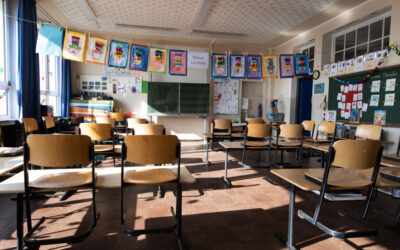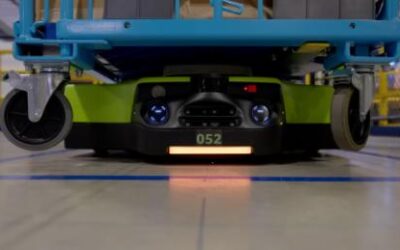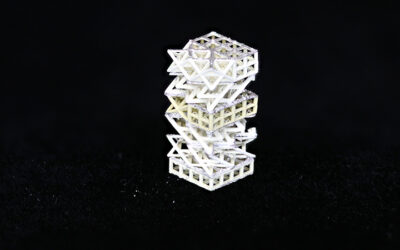https://www.washingtonpost.com/
Ann-Audrey Ezi, at left, gets a high-five from Amber Smith-St. Louis of the Norfolk Navy Shipyard after Ezi’s floating aluminum foil structure held the most marbles before sinking during a naval engineering session in an academic camp at George Mason University. (Jahi Chikwendiu/The Washington Post)By Sarah LarimerJuly 3, 201
Jhalak Singh slipped her boat, created out of aluminum foil, into a plastic container filled with water. Then she watched as Amber Smith-St. Louis began to fill it with blue marbles, counting aloud each time one dropped in.
The little boat didn’t sink under the weight of the marbles. Turns out Jhalak had fashioned a pretty strong little craft, so Smith-St. Louis kept going. Jhalak raised her hands in the air, fists clenched, when Smith-St. Louis hit the 17-marble mark. Defeat came a bit later, when the foil boat started to take on water at 20 marbles.
As it sank, Jhalak tossed her hands on her head. Still, it wasn’t a bad showing for the 13-year-old from Fairfax, Va.
“It was really fun,” she said afterward. “I liked it, because it was, like, intense and challenging.”
The foil boat test was part of a summer camp for girls called FOCUS, held last week at George Mason University. The camp for middle-school students, in its fourth year, centers on science, technology, engineering and mathematics, known as STEM, disciplines in which women have traditionally been underrepresented. It aims to show girls that these fields can be cool and fun — and open to them.Camp counselor Aminata Jaffa, top, helps camp participant Ayah Ahmed understand concepts of electrical circuits during the FOCUS camp at George Mason University. (Jahi Chikwendiu/The Washington Post)
[This math whiz is getting a master’s before graduating high school]
FOCUS, which stands for “females of color and those underrepresented in STEM,” drew a diverse group of clever campers to Mason’s Fairfax campus. And those campers were met by a diverse group of counselors and organizers, eager to show what a future in STEM could be.
Of about 100 participants, 44 percent were African American, 20 percent Asian American, 13 percent Hispanic, 6 percent of Middle Eastern descent and 4 percent white. Others identified as multiracial or preferred not to respond to a demographic question.
“At this camp, the girls are looking at college students who look like them,” said Danielle Blunt Craddock, one of the camp’s co-founders. “They’re looking at faculty and staff that look like them, and really showing them the possibilities of what they could become.”
The camp, sponsored by Mason’s STEM Accelerator program in collaboration with the nonprofit Girls Inspired & Ready to Lead, is open to rising 6th, 7th and 8th grade students.
FOCUS began as an attempt to “really inspire underrepresented girls in STEM,” said Craddock, founder and director of the nonprofit group. Craddock grew up near Mason and said there wasn’t anything like this at the time.
“I really wanted to give that to my community,” she said. “To show the girls, especially girls of color, role models and the path to careers in STEM.”
Data from 2015 shows that 49 percent of scientists and engineers identified as white men, according to a National Science Foundation report. About 18 percent were white women, the data showed. About 7 percent were Asian women, 2 percent Hispanic women and 2 percent African American women.
Kelly Knight, an assistant professor in Mason’s forensic science program and one of the camp’s co-founders, said FOCUS serves young girls at a critical time, before they lose interest or grow discouraged. When kids are at the elementary level, she said, they’re super excited about science. But sometimes their enthusiasm wanes by the time they reach ninth grade.
“So we feel like capturing them before they get to high school is important,” she said. “Because once you get to high school, the opportunities at the high school level, if you have an interest in STEM, are large.”
[Everything is awesome for the Women of NASA Lego set]
On Wednesday, girls at the camp gathered for a session on how to code apps. In another session, they clustered around tables, intently tinkering with little lightbulbs and snap circuit parts.
“I never would have thought that a 12-year-old could do these kinds of things,” said Wintana Habtu, 21, a camp counselor and recent Mason graduate in nursing. “I think it’s because we didn’t have that opportunity when we were younger. We had gifted and talented classes, but it was nothing like this. I don’t remember a STEM camp. I remember sports camps, and that was breaking barriers, too.”
Campers learned about 3-D printing in one session. In another, they listened as Smith-St. Louis, who can normally be found working at the Norfolk Naval Shipyard, ran the experiment with foil boats and encouraged them to go into chemical engineering.
“I’m really in love with science,” said camper Uttara Das, 13, of Fairfax. “Science is one of my favorite subjects, from when I was little.”
The camp was not just about learning details in science and math, though that was pretty cool. At FOCUS, Knight said, girls learn to use their “bold voice.” They learn to network. They learn to work as a team. And they learn that it is fine to speak up, and not be timid.
“So we’re teaching them that it’s okay to do those things,” she said. “It’s not unladylike to do that. I think that girls leave our camp feeling more confident in themselves. They feel more confident in their academic skills. They feel more confident in their career possibilities.”



